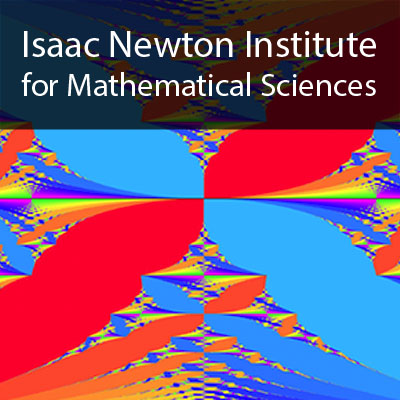Anderson transition at 2D growth-rate for the Anderson model on antitrees with normalized edge weights
28 mins 31 secs,
52.17 MB,
MP3
44100 Hz,
249.8 kbits/sec
Share this media item:
Embed this media item:
Embed this media item:
About this item

| Description: |
Sadel, C (Institute of Science and Technology (IST Austria))
Thursday 09 April 2015, 16:00-16:25 |
|---|
| Created: | 2015-04-13 11:45 |
|---|---|
| Collection: | Periodic and Ergodic Spectral Problems |
| Publisher: | Isaac Newton Institute |
| Copyright: | Sadel, C |
| Language: | eng (English) |
| Distribution: |
World
|
| Explicit content: | No |
| Aspect Ratio: | 16:9 |
| Screencast: | No |
| Bumper: | UCS Default |
| Trailer: | UCS Default |
| Abstract: | An antitree is a discrete graph that is split into countably many shells Sn consisting of finitely many vertices so that all vertices in Sn are connected with all vertices in the adjacent shells Sn+1 and Sn−1. We normalize the edges between Sn and Sn+1 with weights to have a bounded adjacency operator and add an iid random potential. We are interested in the case where the number of vertices #Sn in the n-th shell grows like na. In a particular set of energies we obtain a transition of the spectral type from pure point to partly s.c. to a.c. spectrum at a=1 which corresponds to the growth-rate in 2 dimensions. |
|---|---|
Available Formats
| Format | Quality | Bitrate | Size | |||
|---|---|---|---|---|---|---|
| MPEG-4 Video | 640x360 | 1.93 Mbits/sec | 414.23 MB | View | Download | |
| WebM | 640x360 | 845.91 kbits/sec | 176.58 MB | View | Download | |
| iPod Video | 480x270 | 522.13 kbits/sec | 108.93 MB | View | Download | |
| MP3 * | 44100 Hz | 249.8 kbits/sec | 52.17 MB | Listen | Download | |
| Auto | (Allows browser to choose a format it supports) | |||||

